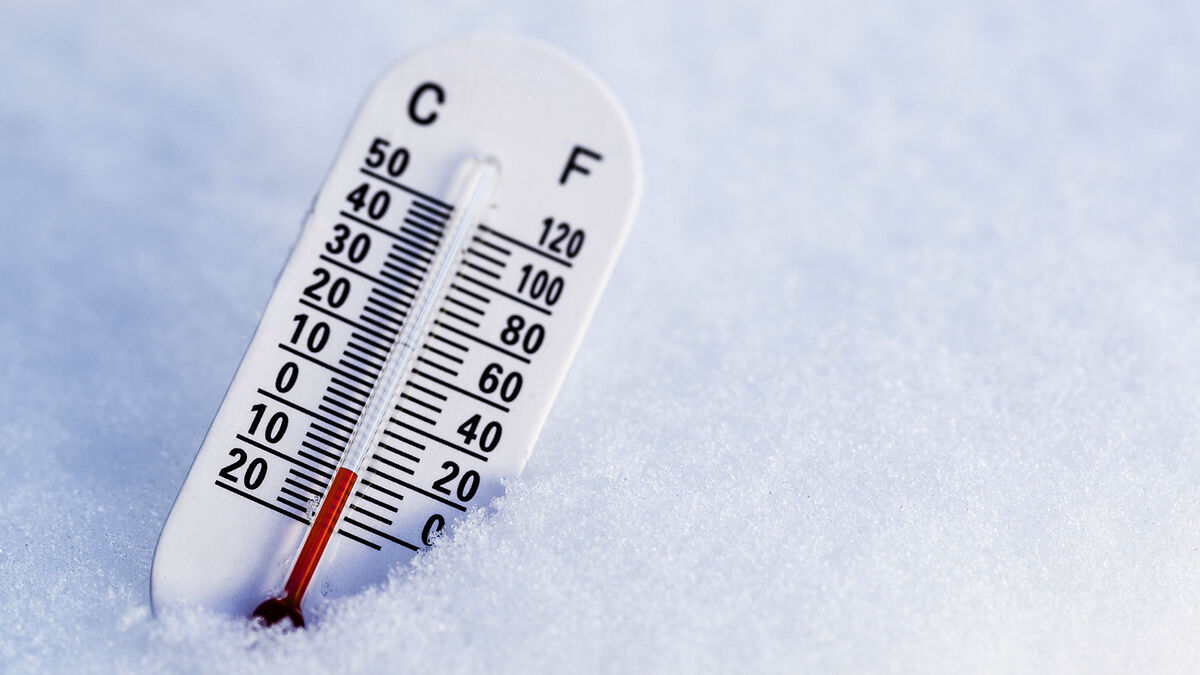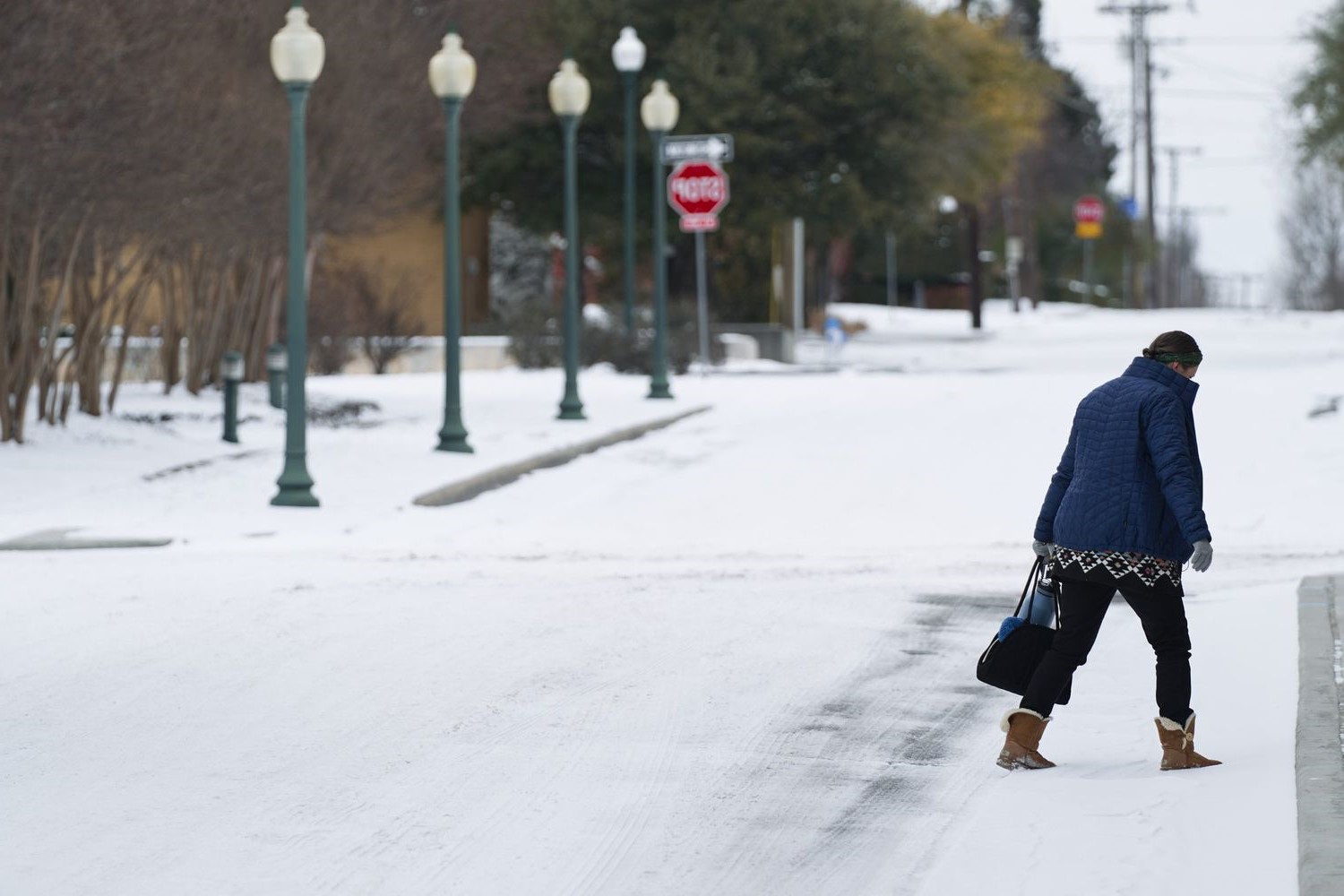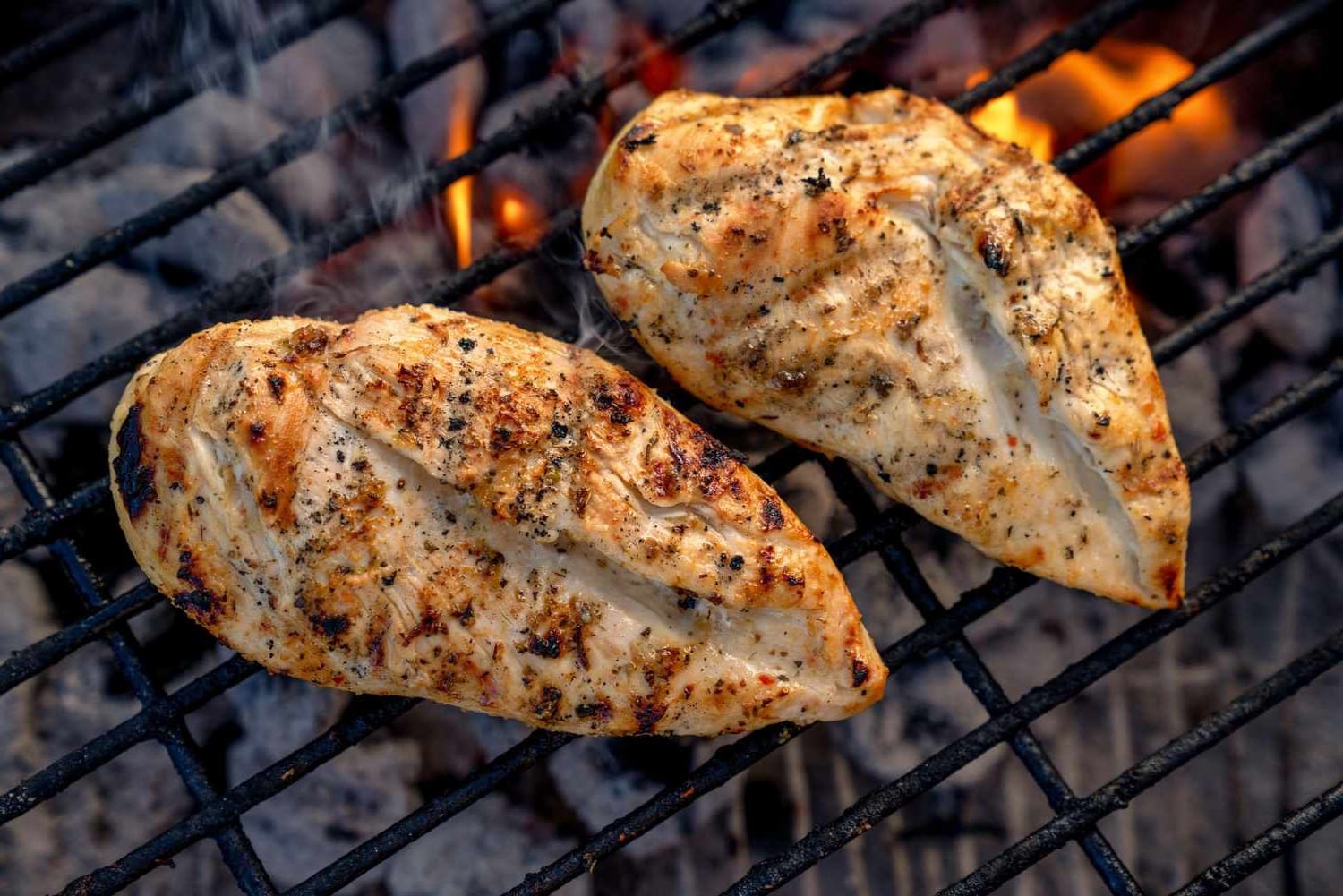Home>Outdoor & Recreation>Converting Celsius To Fahrenheit: A Complete Guide


Outdoor & Recreation
Converting Celsius To Fahrenheit: A Complete Guide
Modified: April 28, 2024
Learn how to easily convert Celsius to Fahrenheit with our complete guide. Perfect for outdoor and recreation enthusiasts. Start converting today!
(Many of the links in this article redirect to a specific reviewed product. Your purchase of these products through affiliate links helps to generate commission for Temperatures.com, at no extra cost. Learn more)
Table of Contents
Introduction
The ability to convert temperatures between Celsius and Fahrenheit is a valuable skill with practical applications in everyday life, especially for outdoor and recreational activities. Whether you're planning a hiking trip, a camping adventure, or simply trying to understand the weather forecast, knowing how to convert temperatures from one scale to another can be incredibly useful.
In this comprehensive guide, we will delve into the nuances of converting Celsius to Fahrenheit, providing you with a clear understanding of the process and the necessary tools to perform accurate conversions. By the end of this guide, you will be equipped with the knowledge to effortlessly navigate between these two temperature scales, enhancing your outdoor and recreational experiences.
Understanding the Celsius and Fahrenheit scales, mastering the conversion formula, and gaining insights into common conversion examples are just a few of the topics we will explore. Additionally, we will share valuable tips and tricks to simplify the conversion process, empowering you to tackle temperature conversions with confidence.
So, whether you're planning a camping trip in a location where temperatures are reported in a different scale, or simply seeking to expand your knowledge, this guide will serve as your go-to resource for mastering the art of converting Celsius to Fahrenheit. Let's embark on this enlightening journey and unravel the secrets of temperature conversion together.
Understanding the Celsius and Fahrenheit Scales
The Celsius and Fahrenheit scales are two of the most commonly used temperature measurement systems worldwide. Understanding the differences between these scales is fundamental to mastering the art of temperature conversion. Let's delve into the unique characteristics of each scale to gain a comprehensive understanding.
Celsius Scale:
The Celsius scale, also known as the centigrade scale, is based on the freezing and boiling points of water. In this scale, the freezing point of water is defined as 0 degrees Celsius, while the boiling point of water is defined as 100 degrees Celsius at standard atmospheric pressure. The Celsius scale is widely used in scientific and everyday contexts, providing a practical and intuitive means of expressing temperature.
Fahrenheit Scale:
In contrast, the Fahrenheit scale, developed by Daniel Gabriel Fahrenheit, is commonly used in the United States and a few other countries. The scale is based on a mixture of historical and practical considerations. In the Fahrenheit scale, the freezing point of water is set at 32 degrees, while the boiling point of water is set at 212 degrees at standard atmospheric pressure. This results in 180 equal divisions between the two reference points, making it less intuitive for everyday use compared to the Celsius scale.
Key Differences:
One of the key differences between the Celsius and Fahrenheit scales lies in their reference points. While the Celsius scale uses the freezing and boiling points of water as its defining markers, the Fahrenheit scale incorporates historical reference points that are not as directly related to natural phenomena. As a result, the Celsius scale is often considered more straightforward and logical for scientific and practical applications.
Understanding the distinct characteristics of the Celsius and Fahrenheit scales provides a solid foundation for temperature conversion. By grasping the unique reference points and intervals of each scale, you will be better equipped to navigate between the two systems with confidence and precision. Now that we have gained insight into the fundamental aspects of these temperature scales, let's proceed to unravel the conversion formula and the step-by-step process of converting Celsius to Fahrenheit.
The Formula for Converting Celsius to Fahrenheit
Converting temperatures from Celsius to Fahrenheit involves a straightforward mathematical formula that allows for precise and accurate conversions. The formula is essential for anyone seeking to seamlessly transition between these two temperature scales. By understanding and mastering this formula, you will gain the ability to effortlessly convert temperatures, enhancing your outdoor and recreational experiences.
The formula for converting Celsius to Fahrenheit is as follows:
[ F = left( C times frac{9}{5} right) + 32 ]
In this formula:
- ( F ) represents the temperature in Fahrenheit.
- ( C ) represents the temperature in Celsius.
To perform the conversion, simply multiply the temperature in Celsius by 9/5 and then add 32 to the result. This straightforward equation allows for quick and accurate conversions, enabling you to interpret and compare temperatures across different scales with ease.
Understanding the rationale behind this formula is crucial for grasping the relationship between the Celsius and Fahrenheit scales. The multiplication by 9/5 accounts for the difference in the size of the degrees between the two scales, while the addition of 32 aligns the reference points of the two scales. This elegant formula encapsulates the essence of temperature conversion, providing a seamless bridge between the Celsius and Fahrenheit scales.
By internalizing this formula, you will gain the confidence to convert temperatures effortlessly, whether you're planning a camping trip, exploring outdoor activities, or simply navigating temperature reports in different scales. With the formula at your disposal, you will be equipped to tackle temperature conversions with precision and efficiency, enhancing your ability to engage with temperature data in various contexts.
Now that we have unraveled the fundamental formula for converting Celsius to Fahrenheit, let's proceed to explore a step-by-step guide that will empower you to apply this formula effectively in real-world scenarios.
Step-by-Step Guide to Converting Celsius to Fahrenheit
Converting temperatures from Celsius to Fahrenheit is a straightforward process that involves applying a simple formula. By following this step-by-step guide, you will gain the proficiency to perform accurate conversions with ease.
Step 1: Obtain the Celsius Temperature
Begin by identifying the temperature in Celsius that you intend to convert to Fahrenheit. Whether you encounter the temperature in a weather report, on a thermometer, or in any other context, this initial step involves determining the temperature value in Celsius.
Step 2: Apply the Conversion Formula
Once you have the temperature in Celsius, it's time to apply the conversion formula. As a quick reminder, the formula for converting Celsius to Fahrenheit is:
[ F = left( C times frac{9}{5} right) + 32 ]
In this formula, 'F' represents the temperature in Fahrenheit, and 'C' represents the temperature in Celsius. To perform the conversion, simply multiply the temperature in Celsius by 9/5 and then add 32 to the result.
Step 3: Perform the Calculation
With the conversion formula in mind, proceed to perform the calculation. Take the temperature in Celsius and multiply it by 9/5. Next, add 32 to the result. This straightforward arithmetic yields the temperature in Fahrenheit, providing you with the converted value.
Step 4: Interpret the Result
Upon obtaining the temperature in Fahrenheit, take a moment to interpret the converted value. By understanding the relationship between the two scales, you can appreciate the significance of the converted temperature in the context of your outdoor or recreational activity. Whether you're planning a hiking trip, a camping adventure, or simply interpreting weather data, the converted temperature in Fahrenheit equips you with valuable insights.
By following these steps, you can seamlessly convert temperatures from Celsius to Fahrenheit, enhancing your ability to engage with temperature data in various scenarios. Whether you're exploring the great outdoors, planning outdoor events, or simply expanding your knowledge, mastering this conversion process empowers you to navigate between temperature scales with confidence and precision.
Common Conversion Examples
To solidify your understanding of converting Celsius to Fahrenheit, let's explore some common conversion examples that showcase the practical application of the conversion formula. These examples will provide valuable insights into the temperature differentials between the Celsius and Fahrenheit scales, allowing you to grasp the nuances of temperature conversion in various contexts.
Example 1: Room Temperature
Suppose the current room temperature is 20 degrees Celsius. To convert this to Fahrenheit, we can apply the conversion formula:
[ F = (20 × 9/5) + 32 ]
Calculating this, we get:
[ F = (36) + 32 ]
[ F = 68 ]
Hence, a room temperature of 20 degrees Celsius is equivalent to 68 degrees Fahrenheit. This example illustrates a common scenario where understanding temperature conversions can enhance everyday experiences.
Example 2: Outdoor Activity Planning
Imagine you're planning a hiking trip, and the weather forecast indicates a temperature of 25 degrees Celsius. To assess the conditions more intuitively, you can convert this temperature to Fahrenheit using the formula:
[ F = (25 × 9/5) + 32 ]
Upon calculation:
[ F = (45) + 32 ]
[ F = 77 ]
Thus, a temperature of 25 degrees Celsius translates to 77 degrees Fahrenheit. This conversion empowers you to gauge the hiking conditions with greater familiarity, enabling informed decision-making for your outdoor adventure.
Example 3: Cooking Temperatures
In culinary endeavors, precise temperature control is crucial. If a recipe specifies an oven temperature of 180 degrees Celsius, you can convert this to Fahrenheit using the formula:
[ F = (180 × 9/5) + 32 ]
Resulting in:
[ F = (324) + 32 ]
[ F = 356 ]
Therefore, an oven temperature of 180 degrees Celsius corresponds to 356 degrees Fahrenheit. This conversion facilitates seamless adaptation between temperature scales, ensuring accurate culinary outcomes.
By exploring these common conversion examples, you gain practical insights into the application of the Celsius to Fahrenheit conversion formula. These examples demonstrate the relevance of temperature conversion in everyday scenarios, ranging from indoor comfort to outdoor pursuits and culinary endeavors. Armed with this knowledge, you are well-equipped to navigate temperature differentials with confidence, enhancing your outdoor and recreational experiences.
Now that we've delved into these illustrative examples, let's proceed to uncover valuable tips and tricks that can streamline the conversion process, further enriching your proficiency in temperature conversions.
Tips and Tricks for Easy Conversions
Mastering the art of converting Celsius to Fahrenheit involves not only understanding the formula and the step-by-step process but also leveraging practical tips and tricks to streamline the conversion process. By incorporating these valuable insights into your approach, you can enhance your proficiency in temperature conversions and navigate between the two scales with ease.
Tip 1: Utilize Approximation Techniques
In scenarios where precise conversions are not essential, utilizing approximation techniques can expedite the process. For quick estimations, you can employ the following rule of thumb: Double the temperature in Celsius and add 30 to obtain a rough approximation in Fahrenheit. While this method may not yield exact results, it can be particularly useful for gaining a general sense of temperature differentials between the two scales.
Tip 2: Recognize Common Temperature Landmarks
Familiarizing yourself with common temperature landmarks in both Celsius and Fahrenheit can facilitate swift mental conversions. For instance, knowing that 0 degrees Celsius is equivalent to 32 degrees Fahrenheit and that 100 degrees Celsius corresponds to 212 degrees Fahrenheit can serve as anchor points for quick reference. By internalizing these key landmarks, you can expedite conversions and interpret temperature differentials more intuitively.
Tip 3: Leverage Online Conversion Tools
In the age of digital convenience, a myriad of online conversion tools and mobile applications are readily available to assist with temperature conversions. These user-friendly resources allow you to input the temperature in Celsius and instantly obtain the converted value in Fahrenheit, eliminating the need for manual calculations. Embracing these digital tools can streamline the conversion process, especially when dealing with multiple temperature values or when precision is paramount.
Tip 4: Practice Mental Calculation
Engaging in regular mental exercises to convert temperatures between Celsius and Fahrenheit can significantly enhance your proficiency. By practicing mental calculations during daily activities, such as interpreting weather reports or assessing cooking temperatures, you can reinforce your conversion skills and develop a natural intuition for temperature differentials. Over time, this practice can lead to increased speed and accuracy in temperature conversions.
Tip 5: Understand the Context of the Conversion
When performing temperature conversions, it is essential to consider the context in which the converted value will be utilized. Whether you are planning outdoor activities, adjusting thermostat settings, or interpreting weather forecasts, understanding the practical implications of the converted temperature enhances the relevance and accuracy of the conversion process. By contextualizing the conversions, you can make informed decisions based on the temperature data in the desired scale.
By incorporating these tips and tricks into your approach, you can streamline the process of converting Celsius to Fahrenheit, enhancing your proficiency and confidence in navigating temperature differentials. Whether you opt for quick approximations, leverage digital tools, or practice mental calculations, these insights empower you to engage with temperature conversions effectively, enriching your outdoor and recreational experiences.
Read more: Pyrex: A Guide To Oven Safety
Conclusion
In conclusion, mastering the art of converting Celsius to Fahrenheit is a valuable skill with practical implications for a wide range of outdoor and recreational activities. By unraveling the nuances of the Celsius and Fahrenheit scales, understanding the conversion formula, and gaining insights into common conversion examples, you have embarked on a journey that equips you with the proficiency to navigate temperature differentials with confidence and precision.
The ability to seamlessly convert temperatures between these two scales empowers you to engage with temperature data in various contexts, ranging from planning outdoor adventures to interpreting weather reports and adjusting cooking temperatures. By internalizing the conversion formula and the step-by-step process, you have gained a valuable tool that enhances your ability to make informed decisions based on temperature data, ultimately enriching your outdoor and recreational experiences.
Furthermore, the exploration of practical tips and tricks has provided you with additional resources to streamline the conversion process. Whether you opt for approximation techniques, leverage online conversion tools, or practice mental calculations, these insights serve as valuable assets that enhance your proficiency in temperature conversions. By incorporating these practical strategies into your approach, you can navigate between temperature scales with ease, ensuring that you are well-equipped to interpret and compare temperatures in the desired scale for any given scenario.
As you venture into the realm of outdoor and recreational activities, the knowledge and skills acquired through this comprehensive guide will serve as invaluable assets, allowing you to engage with temperature data with confidence and precision. Whether you're planning a camping trip, embarking on a hiking adventure, or simply seeking to interpret weather forecasts, the ability to convert temperatures between Celsius and Fahrenheit enhances your capacity to make informed decisions and adapt to varying environmental conditions.
Ultimately, this guide has equipped you with the tools and insights necessary to master the art of converting Celsius to Fahrenheit, empowering you to enhance your outdoor and recreational experiences through a deeper understanding of temperature differentials. By embracing this knowledge, you are well-prepared to navigate temperature conversions with ease, enriching your engagement with the natural world and the diverse array of outdoor activities it offers.










